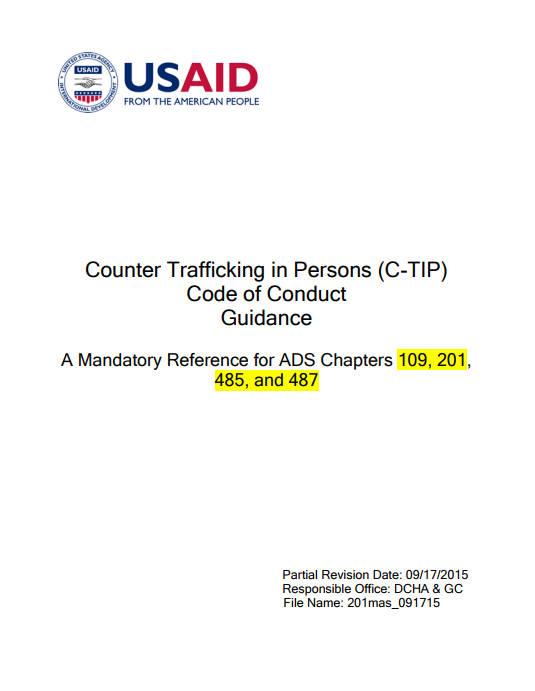Guidance on the Implementation of USAID Counter Trafficking in Persons Code of Conduct
This document provides guidance on the implementation of USAID’s Counter Trafficking in Persons Code of Conduct.
USAID adopted a Counter Trafficking in Persons Code of Conduct that prohibits all employees from engaging in trafficking in persons or any behaviors that may facilitate trafficking, such as commercial sex.

This document provides guidance on the implementation of USAID’s Counter Trafficking in Persons Code of Conduct.
The International Labour Organization maintains a system of international labour standards (ILS) aimed at promoting opportunities for all to obtain decent and productive work, in conditions of freedom, equity, security and dignity. International lab...Read More
WFSGI has been successful in gaining commitment from members to adopt a Code of Conduct and take a proactive, comprehensive approach to Corporate Social responsibility (CSR). In this report the main challenges, good practices and case studies are i...Read More
This Modern Slavery Response & Remedy Framework (the Framework) has been designed in collaboration with Minderoo Foundation’s Walk Free initiative and the Human Rights Resources and Energy Collaborative (HRREC). HRREC is a group of Australian ...Read More
Child sexual abuse (CSA) is a public health problem of considerable magnitude. The prevailing primary prevention strategies are universal, school-based CSA prevention programs, some of which have been designated as evidence-based, such as Safe Touc...Read More